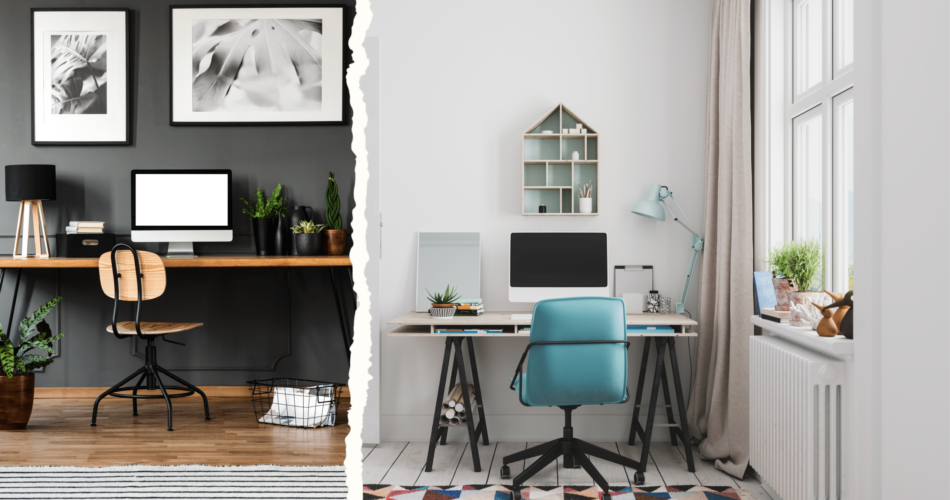In recent years, working from home has become the norm for many people, and as a result, the home office has evolved from a simple desk in a corner to a dedicated, multifunctional space designed to boost both productivity and comfort. A well-designed home office doesn’t just help you get the job done—it enhances your focus, fosters creativity, and creates an environment where you actually enjoy working. Whether you’re setting up a small corner or designing an entire room, here’s how to create a productive and comfortable home office that suits your needs.
1. Ergonomics: Prioritizing Comfort and Health
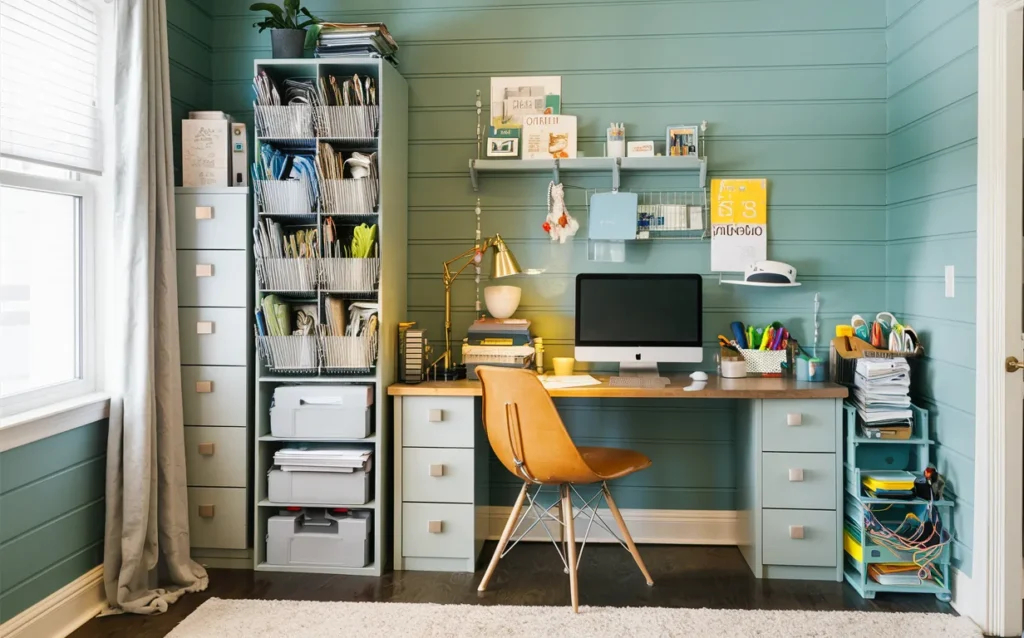
When designing your home office, the most important consideration should be your comfort and health. Spending long hours in front of a computer or at a desk can lead to physical strain, so it’s essential to set up a workspace that promotes good posture and minimizes discomfort.
Key Elements to Consider:
- Ergonomic Chair: A good ergonomic chair is the cornerstone of any productive office. Look for one with adjustable height, lumbar support, and a comfortable seat cushion. Your feet should be flat on the floor, and your knees should be at a 90-degree angle.
- Desk Height: Ensure that your desk is at the correct height for typing. Your forearms should be parallel to the ground when seated at your desk, which helps prevent strain on your wrists and shoulders.
- Adjustable Desk Options: If possible, consider a sit/stand desk. Alternating between sitting and standing throughout the day can help reduce discomfort and increase energy levels.
- Why It Matters: Comfort directly impacts productivity. A well-designed ergonomic setup helps prevent fatigue and discomfort, allowing you to focus for longer periods without physical distractions.
2. Natural Light and Lighting Design
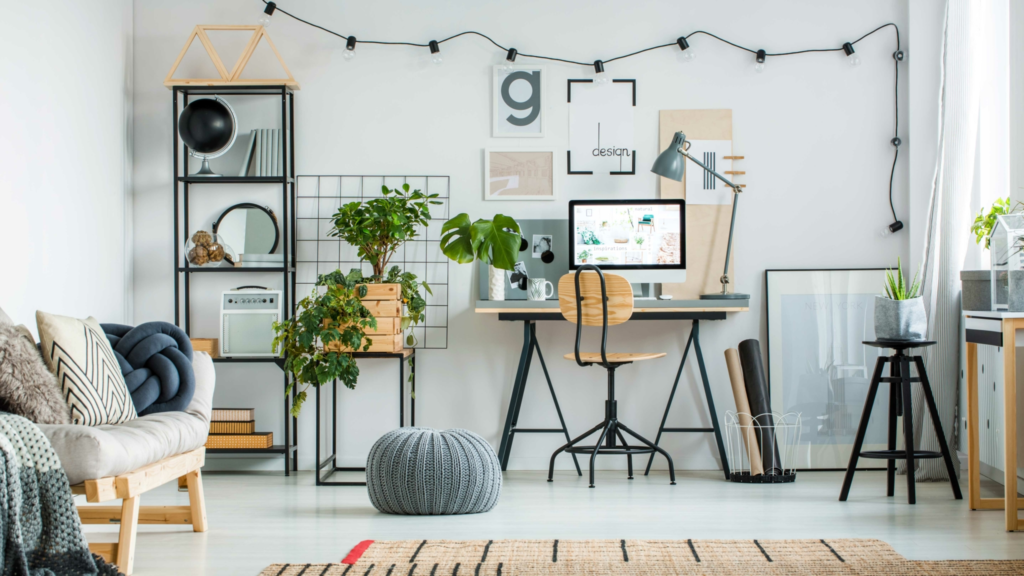
Good lighting can make a significant difference in how you feel during the workday. Natural light, in particular, has been shown to improve mood and productivity. Ideally, your desk should be placed near a window to take advantage of daylight.
Key Lighting Tips:
- Maximize Natural Light: Position your desk near a window or in a space that receives plenty of daylight. If this is not possible, you can supplement with light fixtures that mimic natural light to reduce eye strain.
- Task Lighting: In addition to ambient lighting, a desk lamp with adjustable brightness can help you focus on specific tasks without straining your eyes. Look for one with a flexible neck and dimming options for optimal control.
- Layered Lighting: Use a combination of overhead lights, task lights, and ambient lighting to create a well-lit, comfortable workspace. Consider smart lighting that can be adjusted to match the time of day or your mood.
- Why It Matters: Proper lighting reduces eye strain and fatigue, helping you stay alert and productive. It also helps create a positive atmosphere that can inspire creativity.
3. Organization and Storage: Keeping Clutter at Bay
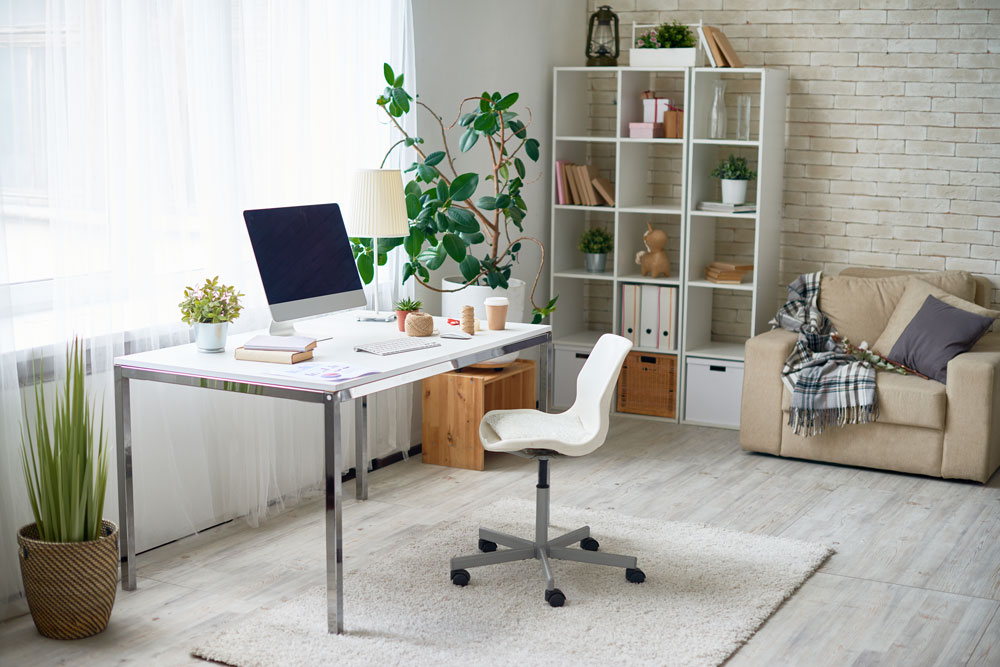
A cluttered workspace can quickly lead to distractions, which is why having an organized environment is key to staying focused. Design your home office with ample storage and organizational systems that work for your workflow.
Tips for Organization:
- Declutter Your Desk: Keep only the essentials on your desk—things you need daily, like your computer, notebook, or phone. Store pens, documents, and other supplies out of sight to maintain a clean and tidy surface.
- Storage Solutions: Invest in storage options like filing cabinets, floating shelves, or storage boxes. Having a designated space for everything—from paperwork to office supplies—ensures that you won’t waste time searching for things.
- Cable Management: Tidy up cables using cord organizers or cable clips to prevent tangling and keep your workspace looking neat. Cable-free desks create a cleaner and more professional environment.
- Why It Matters: A clutter-free workspace reduces stress and helps you stay focused. An organized office promotes better efficiency and ensures that you’re always prepared for any task.
4. Personalization: Adding Character to Your Office
While functionality is important, your home office should also reflect your personality and style. A personalized workspace makes the environment more inviting and can boost creativity.
Ideas for Personalizing Your Space:
- Artwork and Decorations: Add some personality with artwork or photos that inspire you. This could be anything from a framed print to a motivational quote or a personal photograph that brings you joy.
- Plants: Incorporating indoor plants into your office brings a touch of nature and has been shown to improve mood and air quality. Choose low-maintenance plants like succulents or snake plants if you don’t have a green thumb.
- Unique Furniture and Decor: Choose furniture pieces that reflect your personal style, whether that’s modern, minimalist, boho, or industrial. A stylish chair, desk, or lighting fixture can make the space feel more enjoyable and engaging.
- Why It Matters: A personalized workspace creates a more enjoyable environment, boosting your motivation and helping you feel more at ease during the workday.
5. Incorporating Color Psychology
Colors have a significant impact on our mood and productivity. When designing your home office, it’s essential to think about how color can influence your focus, energy levels, and creativity.
Best Colors for Productivity:
- Blue: Known for its calming and soothing qualities, blue is ideal for promoting focus and concentration. It works particularly well for tasks that require attention to detail.
- Green: Associated with growth and harmony, green is a great choice if you want to create a calm and balanced environment. It’s also great for reducing eye strain if you spend long hours in front of the screen.
- Yellow: Yellow is a color that stimulates creativity and optimism. If your work requires creative thinking or brainstorming, a splash of yellow can help get the ideas flowing.
- White or Neutrals: If you prefer a clean, minimalist look, neutral tones like white, beige, or gray create a calm, uncluttered environment that encourages focus.
- Why It Matters: The right colors can create an environment that aligns with your work style. By choosing colors that promote focus, creativity, or relaxation, you can tailor your office space to support your productivity.
6. Creating a Quiet, Distraction-Free Zone
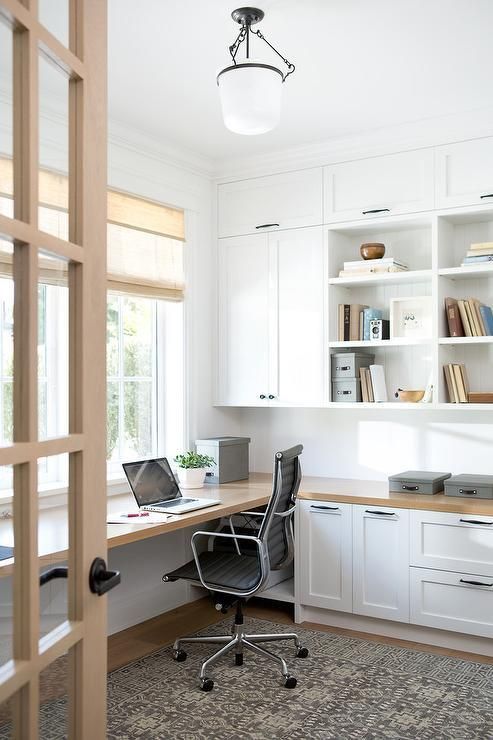
Distractions are a major challenge when working from home, so it’s important to set up a workspace that helps you stay focused. Consider creating a separate area for work or implementing strategies to minimize noise and interruptions.
Tips for Minimizing Distractions:
- Separate Workspace: Ideally, your home office should be located in a quiet area of your home, away from high-traffic zones. If you don’t have a dedicated room, consider using room dividers or screens to create a sense of separation from the rest of the house.
- Noise Reduction: If noise is an issue, consider soundproofing your office with thick curtains or rugs that absorb sound. Noise-canceling headphones can also help you focus if you’re working in a more open environment.
- Set Boundaries: Make it clear to family members or housemates when you need uninterrupted work time. Use signs or designated office hours to create boundaries between work and home life.
- Why It Matters: A quiet, distraction-free workspace helps you stay focused and maintain a professional mindset, making it easier to stay productive throughout the day.
7. Multifunctional Space Considerations
If you’re working in a small space or need to maximize a multifunctional room, it’s important to design your office with flexibility in mind. Consider pieces that can be easily moved or adapted for different uses.
Ideas for Multifunctional Spaces:
- Foldable or Compact Furniture: Choose foldable desks or wall-mounted shelves to save space when your office is not in use. A compact desk or storage unit can double as a space for meetings or as a guest room when needed.
- Dual-Purpose Furniture: Furniture that serves multiple purposes—like a desk that can be used as a dining table or a chair that functions as extra seating—can help you optimize the space.
- Why It Matters: In smaller homes or apartments, maximizing space is key. A multifunctional office makes it easier to work and live comfortably without feeling cramped or cluttered.
Conclusion
Designing a home office that is both productive and comfortable is crucial for achieving work-life balance, boosting your productivity, and creating an environment where you can thrive. By prioritizing ergonomics, incorporating natural light, staying organized, and personalizing the space, you can create an office that enhances both your efficiency and well-being. Whether you’re working from home full-time or just need a dedicated space for occasional tasks, thoughtful design can make a world of difference in how you work and feel throughout the day.

